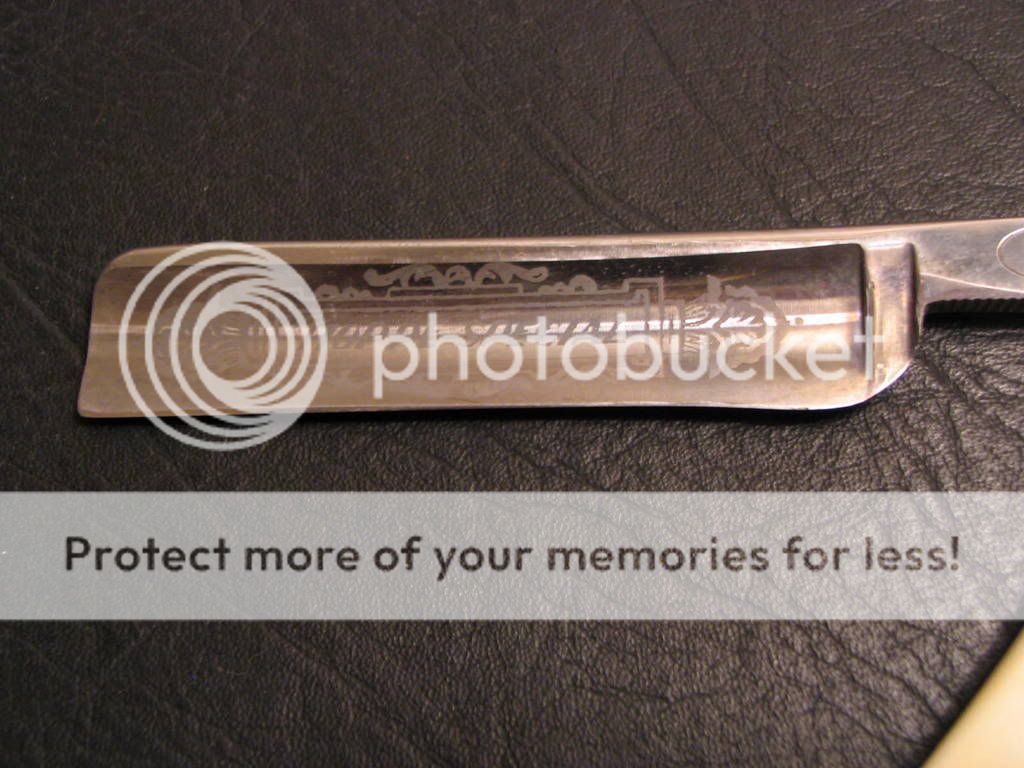I've been DE shaving for about six months and I'm curious about straight edges. I bought the sight unseen deal from whippeddog and I'm waiting for it to show up. I like looking for razors at antique shops (6 of my 7 DE razors were bought at antique shops) and I've been skipping over the straights until recently. I'm wondering what I should be looking for when I see an antique straight. I'd really appreciate some help so that i know what I'm looking for. Thanks in advance.
You are using an out of date browser. It may not display this or other websites correctly.
You should upgrade or use an alternative browser.
You should upgrade or use an alternative browser.
How do I evaluate antique straight razors?
- Thread starter theolliellama
- Start date
I would look for a razor made in the USA, Solingen Germany, or Sheffield England.
Little or no hone wear
Scales in good condition
No rust, especially near the edge (nice patina is ok)
No chips or cracks in the blade
Straight edge or maybe a little bit of a smile
Aesthetically pleasing to you, and in your budget.
Avoid excess hone wear..

and frowns...

Little or no hone wear
Scales in good condition
No rust, especially near the edge (nice patina is ok)
No chips or cracks in the blade
Straight edge or maybe a little bit of a smile
Aesthetically pleasing to you, and in your budget.
Avoid excess hone wear..

and frowns...

Nice scales aren't a must but a plus. I have bought some very nice blades with crap scales. I have been thinking about starting to carry a loupe with me to check for cracks.
I have been thinking about starting to carry a loupe with me to even read the shank 

I have been thinking about starting to carry a loupe with me to even read the shank
I guess it would help there too.

doc gives great advice on where to find answers.
I have been thinking about starting to carry a loupe with me to even read the shank
+1 I carry a loupe, fold up ruler (IKEA), and a flashlight anytime I go antiquing. Too many times I've found a crack or misread a brand in poor store lighting.
I never thought about a ruler. I carry a Streamlight nano in my back pocket eveyday, very nice and bright little light. I wonder if there is a iphone app that is a ruler where you could lay the blade on the screen and be able to measure the width.
There is always the old "buy then all send then to ole Paco to evaluate or dispose of them for me" method....
(innocent smile)
(innocent smile)
There are quite a few for iOS and Android. Just search for "Ruler" and you will find tons. I am an Android user and prefer "Smart Ruler".
I actually use my phone for all of the above mentioned uses (loupe, light, ruler, and to search the web for info). I just recently moved to the Seattle area and am going through the local antique stores near the house. The light and camera are invaluable. For "loupe", I take a photo at high resolution then zoom in on it on the phone. Granted, a real loupe is better, but I have been able to see quite a bit on a razor's edge doing this that I can't see with the naked eye. The best benefit is that while I might walk off without a loupe or ruler, I never leave without my phone.
I actually use my phone for all of the above mentioned uses (loupe, light, ruler, and to search the web for info). I just recently moved to the Seattle area and am going through the local antique stores near the house. The light and camera are invaluable. For "loupe", I take a photo at high resolution then zoom in on it on the phone. Granted, a real loupe is better, but I have been able to see quite a bit on a razor's edge doing this that I can't see with the naked eye. The best benefit is that while I might walk off without a loupe or ruler, I never leave without my phone.
True. I never thought about taking a pic of the edge and zooming in. That's a great idea.
Read a lot, and heed the advise, but in the end, the real way is to buy a few, work them all the way through, and learn a boat load each time. You will look for cracks, chips, pits... but until you have a couple come back and bite you in the bum, you aren't REALLY looking well enough. You will look for excessive hone wear, but until you get one like the W&B I am working on, you don't know what to look for. In my case, there was so much patina that the bevel was completely hidden, and it was so abused along the edge that I am still working on correcting it. I should have been checking for LOTS of things that I didn't even know existed. I am going to work it through to the end, both because 1) I wanted some honing experience (oh, the experience!), and 2) How else would I learn my lesson? Good luck!
Similar threads
- Replies
- 4
- Views
- 964
- Replies
- 9
- Views
- 1K
- Replies
- 8
- Views
- 1K

